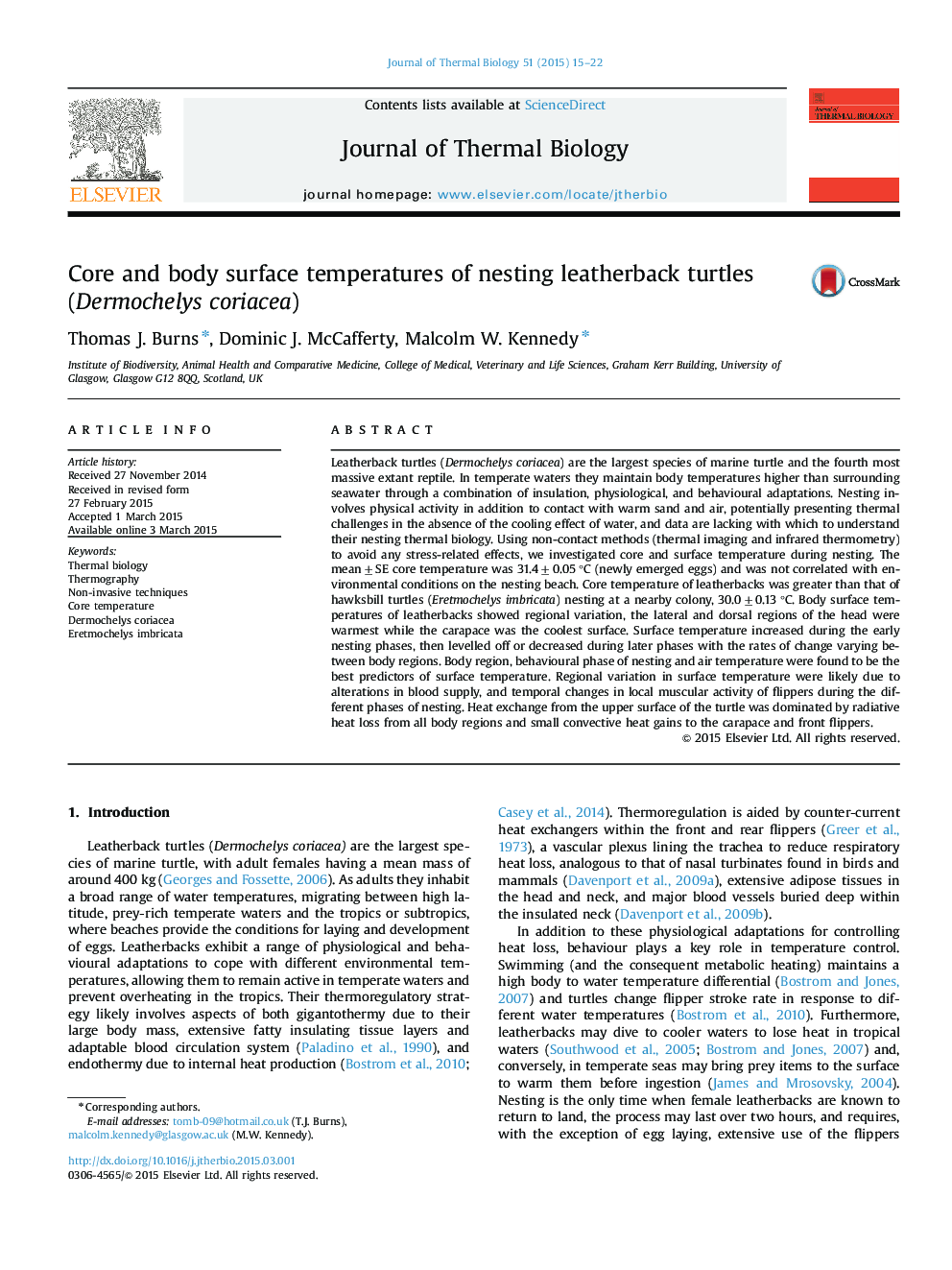| کد مقاله | کد نشریه | سال انتشار | مقاله انگلیسی | نسخه تمام متن |
|---|---|---|---|---|
| 2842799 | 1571095 | 2015 | 8 صفحه PDF | دانلود رایگان |

• Thermal biology of leatherbacks was investigated throughout nesting.
• Estimated core temperatures did not correlate with beach environmental conditions.
• Body surface temperatures varied by region: head>flippers>carapace.
• Surface temperatures initially increased before remaining constant or decreasing.
• Surface temperatures were influenced by beach air temperatures.
Leatherback turtles (Dermochelys coriacea) are the largest species of marine turtle and the fourth most massive extant reptile. In temperate waters they maintain body temperatures higher than surrounding seawater through a combination of insulation, physiological, and behavioural adaptations. Nesting involves physical activity in addition to contact with warm sand and air, potentially presenting thermal challenges in the absence of the cooling effect of water, and data are lacking with which to understand their nesting thermal biology. Using non-contact methods (thermal imaging and infrared thermometry) to avoid any stress-related effects, we investigated core and surface temperature during nesting. The mean±SE core temperature was 31.4±0.05 °C (newly emerged eggs) and was not correlated with environmental conditions on the nesting beach. Core temperature of leatherbacks was greater than that of hawksbill turtles (Eretmochelys imbricata) nesting at a nearby colony, 30.0±0.13 °C. Body surface temperatures of leatherbacks showed regional variation, the lateral and dorsal regions of the head were warmest while the carapace was the coolest surface. Surface temperature increased during the early nesting phases, then levelled off or decreased during later phases with the rates of change varying between body regions. Body region, behavioural phase of nesting and air temperature were found to be the best predictors of surface temperature. Regional variation in surface temperature were likely due to alterations in blood supply, and temporal changes in local muscular activity of flippers during the different phases of nesting. Heat exchange from the upper surface of the turtle was dominated by radiative heat loss from all body regions and small convective heat gains to the carapace and front flippers.
Journal: Journal of Thermal Biology - Volume 51, July 2015, Pages 15–22